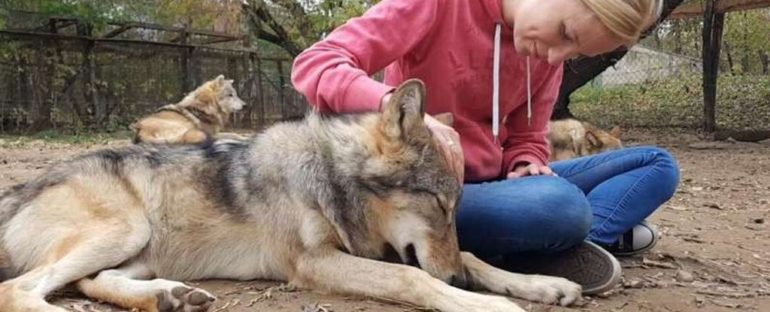There’s no doubt our ancient and enduring relationship with good boys and girls has made dogs special in many ways. Dogs have influenced our evolution too – our bond is written in our genes.
But some of their best traits may have already existed in their wild ancestors – like their ability to form deep, enduring, and emotionally dependent attachments to us humans.
A team of researchers from Eötvös Loránd University in Hungary compared the behaviours of hand-raised grey wolves (Canis lupus) and dogs (Canis familiaris) to test this.
“Dogs seek protection from their owners in threat or they are calmer in new situations when their owner is present, but they show signs of stress in their absence,” said ethologist Rita Lenkei.
“We were wondering whether intensively socialised adult wolves show at least some features of the attachment behaviour towards their handlers.”
The scientific criteria for this type of attachment includes: preference for one individual over another; feeling secure enough to explore when the preferred individual is present; signs of stress when they leave; attempts to re-establish contact; and intense greeting behaviour on reunion.
Sure enough, grey wolves displayed these behaviours in tests just like the dogs did. When their handlers left them in an unfamiliar place, they whined, panted, and licked their lips – signs of stress. They pulled their leash towards the direction of their handler’s hiding place – seeking contact.
“However, when the stranger disappeared these behaviours were barely present,” explained ethologist Tamás Faragó.
The wolves also explored the new area when their handler was there, showing they feel more secure when their human is present.
The experiment also clarifies the nature of the relationship between canines and humans. As the handler in the study was not the original person who raised the wolf pup, the researchers concluded this bond forms at a later age than a bond that would suggest a mother-child type relationship.
“These results raise the possibility that the attachment towards humans in dogs might have originated from the social bond between the members of the wolf pack, that has a very similar social structure to human families, in which companion dogs live today,” the ethologists explain in their paper.
“We must keep in mind that though during our test they showed similar behaviour, we are talking about separate species, and the dog is not just a tame wolf, while the wolf will never become a pet,” cautioned Lenkei, pointing out that intensive socialisation of their wolf subjects was required for them to form these behaviours towards humans.
Exactly when we started changing the common ancestor of wolves and dogs is still a bit of a puzzling mess, but genetic analysis shows the two species could have diverged as far back as 40,000 years ago.
During this time, dogs further developed this ability to bond with humans at any age, and during the new experiment they showed more attraction towards all the humans involved than the wolves did.
“Changes during domestication are quantitative, rather than qualitative,” the team wrote, meaning the strength of the ability changes rather than its presence or absence.
This study adds weight to slowly growing evidence that dogs and humans aren’t the only animals showing cross-species attachments. It’s also present in primates, and a recent study showed similar relationship traits are displayed by cats, including separation distress and contact seeking.
Nonetheless, it is a scantily researched area. While many of us would attest that all sorts of animals in our care do form mutual bonds with us – including zookeepers and their charges – many animals that share a long history with humans, such as horses, have not had the separation stress aspect of their attachment investigated.
However, other behavioural components of attachment to humans, like feeling more secure in the presence of their carers, has been suggested.
Of course, lack of research on other species does not mean they can’t form such bonds. The ability to care for other individuals within the same species runs deep in our mammalian heritage, after all. It would be fascinating to see how many animals can extend this to other species.
This research was published in Scientific Reports.



